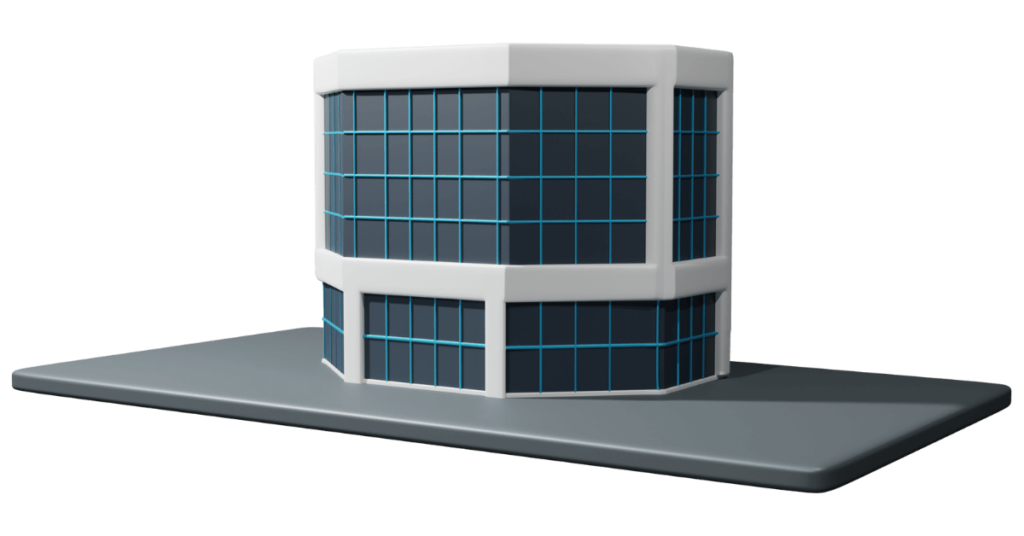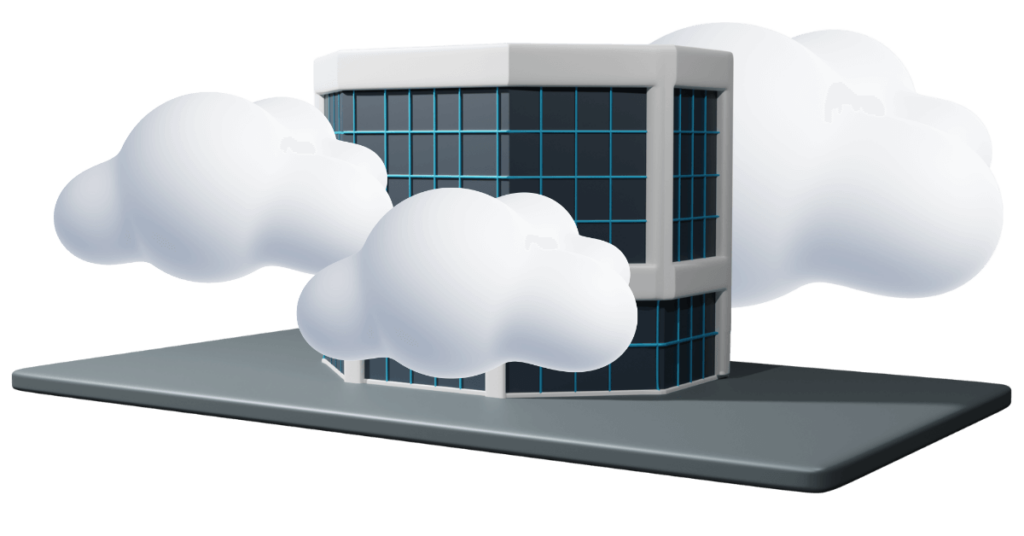Today, more than ever before, businesses are presented with a crucial decision: to fully embrace cloud-based solutions or rely on traditional on-premise infrastructure. As a leading construction management company operating wholly in the cloud, Loop Logics has firsthand experience in navigating the benefits and challenges of cloud tech. So, what are the differences between cloud and on-premise solutions? What are the pros and cons of each approach? And finally, is there a third alternative?
Types of Infrastructure
On-Premise

Traditionally, businesses housed their data and applications in physical servers located on-site, typically in a server room or data centre.
Cloud-Only

As the name suggests, cloud-only infrastructure relies entirely on cloud-based services and platforms for storage, computing, and application deployment. These are often provided by large platform vendors like Microsoft, Amazon and Google.
Hybrid

Hybrid environments blend on-premises infrastructure with cloud-based solutions, providing enhanced flexibility and scalability through the integration of both environments.
Loop Logics: A Cloud-First Approach
At Loop Logics, we've embraced a 100% cloud-based model, leveraging the power and flexibility of cloud technology to deliver innovative construction management solutions. By carefully choosing cloud-based platforms, we’re able offer our customers unparalleled flexibility, scalability, and accessibility, enabling them to streamline project workflows and drive efficiency, no matter where they are operating.
Pros and Cons of the Cloud
Pros
- Scalability: Cloud-based solutions offer virtually limitless scalability, allowing businesses to adjust resources based on demand easily.
- Accessibility: With cloud technology, data and applications can be accessed from anywhere with an internet connection, promoting collaboration and remote work capabilities.
- Cost-Efficiency: Cloud services typically operate on a pay-as-you-go model, eliminating the need for costly upfront capital investments in infrastructure and deployments.
- Disaster Recovery: Cloud providers offer robust backup and disaster recovery solutions, ensuring data integrity and business continuity in the event of a disaster.
Cons
- Security Concerns: While cloud providers implement stringent security measures, the customer still has the onus to ensure the security of their applications. Concerns about data breaches and unauthorised access remain a consideration for businesses.
- Dependence on Internet Connectivity: Cloud-based solutions rely on Internet connectivity, which can pose challenges in areas with unreliable or limited Internet access.
- Migration Challenges: Migrating existing on-premises infrastructure to the cloud can be complex and time-consuming. A ‘lift and shift’ approach can lead to cost blowouts, eroding any capital investment savings.
Pros and Cons of On-Premise Solutions
Pros
- Data Control: On-premise solutions allow businesses to completely control their data and infrastructure, reducing reliance on third-party providers.
- Customisation: Businesses can tailor on-premise solutions to meet their specific needs and preferences, ensuring optimal performance and compatibility.
- Compliance: On-premise solutions may offer greater control over compliance requirements, particularly for industries with strict regulatory standards.
Cons
- Cost: On-premise solutions often require significant upfront investment in hardware, software, and maintenance, leading to higher initial costs compared to cloud-based alternatives.
- Scalability: Scaling on-premise infrastructure can be challenging and costly, requiring additional hardware purchases and upgrades as business needs grow.
- Maintenance: Businesses are responsible for maintaining and updating on-premise infrastructure, which can be time-consuming and resource-intensive.
A Third Approach?
Some businesses are choosing a hybrid approach for their compute strategy. Hybrid environments combine on-premise infrastructure with cloud-based solutions, hybrid setups offer flexibility and scalability by leveraging both environments. This approach can be desirable for larger businesses that already have a strong investment in On-Prem tech or that rely on bespoke applications that cannot be readily operated in the cloud.
While on-premise solutions have long been the norm for many businesses, the shift towards cloud-based technology offers undeniable advantages in scalability, accessibility, and cost-efficiency. At Loop Logics, our commitment to innovation and efficiency drives our cloud-first approach, empowering our clients to thrive in an increasingly digital landscape. As businesses continue to adapt to evolving technology trends, embracing the cloud will undoubtedly play a pivotal role in driving growth and success.
For more insights and expertise on cloud-based construction management solutions, connect with Loop Logics today.






